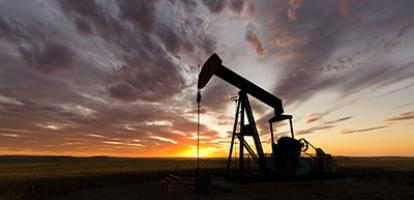Published in the Globe and Mail on March 24, 2015
By: Christopher Ragan
Christopher Ragan is an associate professor of economics at McGill University in Montreal and a research fellow at the C.D. Howe Institute in Toronto.
Born and raised in Edmonton, and living only “temporarily” in Montreal for the past 25 years, I still miss many things about my home province. But I don’t miss Alberta’s boom-bust economy and how this dynamic has permeated the provincial government’s fiscal structure.
Alberta’s Premier, Jim Prentice, has said that the budget on March 26 will include a 10-year plan for provincial finances. This is very promising. Mr. Prentice is a smart man and a talented politician – yet even his considerable skills will be tested if his plan includes the reforms needed to put Alberta’s finances on a sustainable footing.
The main problem with Alberta’s fiscal system is that its annual resource revenues, mostly from oil and gas royalties, have for many years been tightly connected with the government’s annual budget. In recent years, roughly 20 per cent of the province’s total revenues have been resource based, and a large fraction used to finance annual program spending.
This tight linkage between resource revenues and the budget means that the boom-bust cycle from the world oil market inevitably appears in government spending. Years of high oil prices and resource earnings lead to spending booms. This all feels pretty good, at least while it lasts. But when oil prices fall, as they inevitably do, the decline in resource revenues forces the government to scramble to cut programs, raise taxes, or run budget deficits. These adjustments are difficult, not least because they’re so unpopular.
A second problem is that most resource revenues come from the sale of non-renewable assets belonging to current and future generations of Albertans. Fairness to those future generations requires that the funds not be spent mostly on current expenditures but instead be set aside, to be used slowly over time, and far into the future.
Three elements are needed to rebuild Alberta’s fiscal system in a solid and sustainable way.
1. Break the link between annual resource revenues and the annual budget. Rather than being used to fund current expenditures, all the annual resource earnings should be set aside. Mandatory annual contributions to the Heritage Saving Trust could be re-established by law. Over the past 10 years, the average resource earnings have been about $10-billion a year; with annual contributions of this size, the resource funds would accumulate very quickly, and could be invested wisely.
At the same time, the Alberta government could legislate that a small fraction, say 5 per cent, of the accumulated funds would be used for the government’s general revenues. After a decade of $10-billion annual contributions, such a rule would lead to well over $5-billion being injected into the annual budget. Note that even though the boom-bust cycle would still exist for the province’s annual resource earnings, the much larger stock of accumulated assets would grow more smoothly, and so the annual 5-per-cent injection into general revenues would also be relatively non-cyclical.
2. Design spending for the province’s demographic needs. Alberta has long grown faster than the rest of the country, and this pattern will likely continue. With this growth it is only natural that Alberta’s spending on schools, hospitals, highways and other public infrastructure will also be rising. The government needs a spending plan that accommodates this growth while being careful not to spend on unnecessary frills. Of course, determining what is necessary and what is optional is difficult, and requires an open and honest discussion with the voters and taxpayers.
3. Design an adequate tax system. Alberta’s tax system should be redesigned so that, when combined with the annual injection from the accumulated resource assets, enough revenue is available to finance total expenditures. To do any less would put the province in the position of sustained budget deficits. And unless the spending plan from above involves massive annual cuts, some form of taxes will need to rise in Alberta. Corporate income taxes, personal income taxes and a provincial sales tax are the obvious choices – and in each case Albertans are among the lowest taxed in Canada. There is easily room for a small increase here that would maintain the province’s valuable low-tax brand.
Alberta is blessed with resource wealth that most jurisdictions can only imagine. But such a resource blessing need not produce the curse of a boom-bust fiscal cycle. Hopefully Mr. Prentice’s 10-year plan will move in the direction of these three elements – and hopefully Albertans will be wise enough to follow his lead.




